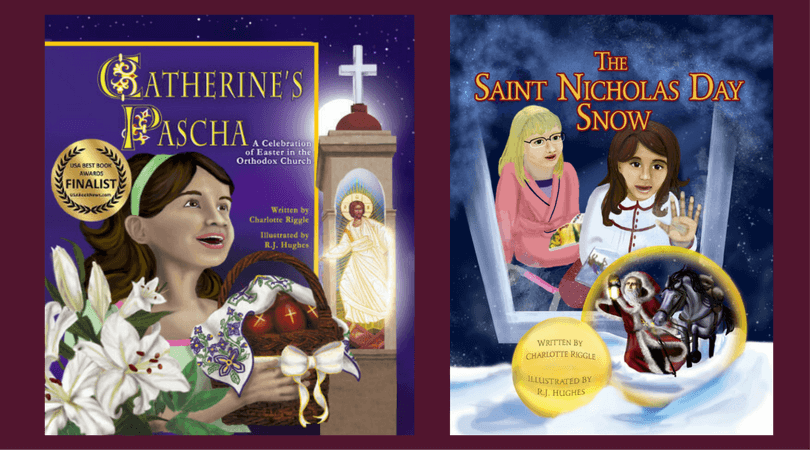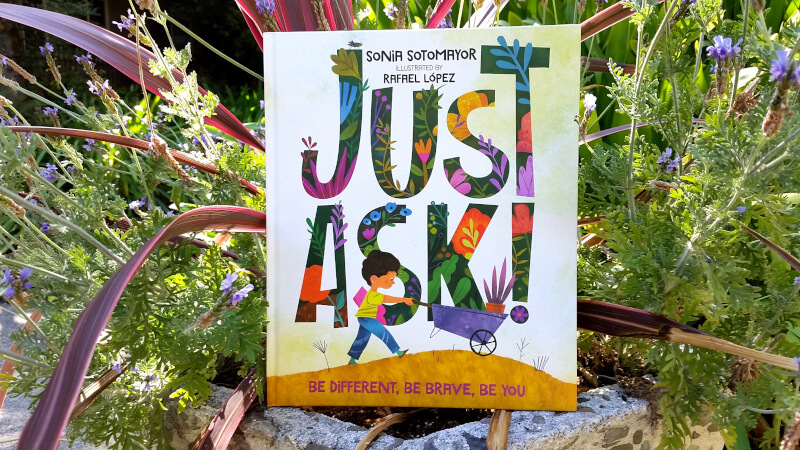You may have seen some of the buzz around Just Ask! And you might be wondering whether author and Supreme Court Justice Sonia Sotomayor can write a picture book. The answer is, yes, she can.
Just Ask! is not a perfect picture book. But it’s a good one. And it’s important because it introduces a wide range of disabilities in a friendly and matter-of-fact way.
The situation is simple: A group of children are planting a garden. The narrator, the child Sonia, introduces gardens as a magical place where all the plants are different, and they’re all wonderful.
Then she shifts to the idea that people are all different, too. And if people are different in ways that you don’t understand, it’s okay to ask.
How the book introduces disabilities
Sonia (as a child) explains that not everyone will be comfortable answering questions about themselves, but she is. She gives herself shots of insulin every day. It’s a medicine that she needs because she has diabetes.
Then she asks the question: Do you ever need to take medicine to be healthy?
Next, we meet Rafael. Rafael has asthma, and he uses an inhaler to take medicine that he needs to stay healthy.
Then he asks a question: My inhaler is like a tool to help my body. Do you use a tool to help your body?
And when we turn the page, we meet Anthony, who uses a wheelchair.
Then he asks a question: How do you get from place to place?
This structure gives the book a lovely rhythm. We go on to meet children who are blind, Deaf, who have dyslexia and autism and life-threatening allergies, who stutter, who have ADHD and Tourette’s and Down syndrome. The children introduce themselves and their condition, then ask a question that leads to the next child.
The explanations are brief – mostly 2 or 3 sentences. Sotomayor was not trying to explain each disability in detail. Rather, she explains in the forward, “I wanted to write his book to explain how differences make us stronger in a good way…. I hope by seeing yourself or your friends in this story, you will understand that we’re all different, and you will find that notion comforting and empowering.”
A visually engaging book
If you don’t recognize the illustrator’s name, you’re sure to recognize Rafael López’s distinctive style. All of his picture books are vibrant and exuberant, dancing with shapes and colors. He renders people with affection and joy.
His books have won all manner of awards, including the Jane Addams Children’s Book Award, the National Cartoonist Society Book Illustration Award, the Américas Book Award (twice), the Pura Belpré medal (twice), and Pura Belpré honors (three times).
And his style works beautifully in Just Ask!
OpenDyslexic font
Part of the visual style of any book is the font. I don’t know whether López chose to set the text of the book in OpenDyslexic, or whether that was someone else’s choice, but I was delighted to see it.
The font is intended to make reading easier for some people with dyslexia. It doesn’t help everyone, of course. Some people with dyslexia prefer Comic Sans or other fonts. But many do. And, as someone who does not have dyslexia, I found it both lovely and unexpectedly easy to read.
My daughter, on the other hand, found it painful to look at and impossible to read. Her visual processing is seriously atypical, and when she looked at the page, the letters pulsed and the words moved, and it hurt. So if you’re thinking of getting this book for someone with a history of visual processing difficulties, you might want to have them look at a library copy first.
Read More
The best picture books with disabled characters: If you’ve had trouble finding picture books that include characters with disabilities, this list will help.
Welcoming everyone to church: Disability and special needs: Have you noticed how few people with disabilities attend church? Have you looked at the barriers that keep them away? These resources will help you start taking down the barriers.
A Boy and a Jaguar: A story of words and promises: Alan Rabinowitz stuttered when he was a child. So he made a promise, first to his pets, and then to a jaguar at the zoo: “I promise that if I can ever find my voice, I will be their voice and keep them from harm.”
Buy the Books!

These delightful books will diversify your bookshelves with disability representation. Elizabeth, one of the main characters, is an ambulatory wheelchair user.
Catherine’s Pascha
FINALIST IN THE 2015 USA BEST BOOK AWARDS
Catherine doesn’t like vegetables. She doesn’t like naps. She doesn’t like it when her mom combs her hair. She loves hot dogs, chocolate cake, and her best friend, Elizabeth. Most of all, she loves Pascha! Pascha, the Orthodox Christian Easter, is celebrated in the middle of the night, with processions and candles and bells and singing. And Catherine insists that she’s not a bit sleepy.
Celebrate the joy of Pascha through the magic of a book: Catherine’s Pascha. Available on Amazon, Bookshop.org, and my webstore.
The Saint Nicholas Day Snow
Shoes or stockings? Horse or sleigh? Does St. Nicholas visit on December 6 or on Christmas Eve? Will a little girl’s prayer be answered? When Elizabeth has to stay at Catherine’s house, she’s worried about her grandmother, and worried that St. Nicholas won’t find her. The grownups, though, are worried about snow.
Celebrate the wonder of St. Nicholas Day through the magic of a book: The Saint Nicholas Day Snow. Available on Amazon, Bookshop.org, or my webstore.



